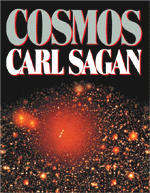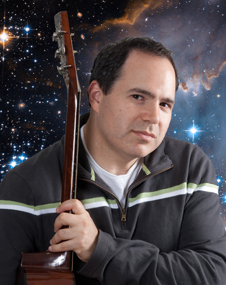
Astrophysics is a science that employs the methods and principles of physics and chemistry in the study of astronomical objects and phenomena. As one of the founders of the discipline, James Keeler, said, Astrophysics "seeks to ascertain the nature of the heavenly bodies, rather than their positions or motions in space–what they are, rather than where they are." Among the subjects studied are the Sun, other stars, galaxies, extrasolar planets, the interstellar medium and the cosmic microwave background. Emissions from these objects are examined across all parts of the electromagnetic spectrum, and the properties examined include luminosity, density, temperature, and chemical composition. Because astrophysics is a very broad subject, astrophysicists apply concepts and methods from many disciplines of physics, including classical mechanics, electromagnetism, statistical mechanics, thermodynamics, quantum mechanics, relativity, nuclear and particle physics, and atomic and molecular physics.

W. W. Norton & Company is an American publishing company based in New York City. Established in 1923, it has been owned wholly by its employees since the early 1960s. The company is known for its Norton Anthologies and its texts in the Norton Critical Editions series, both of which are frequently assigned in university literature courses.

Neil deGrasse Tyson is an American astrophysicist, author, and science communicator. Tyson studied at Harvard University, the University of Texas at Austin, and Columbia University. From 1991 to 1994, he was a postdoctoral research associate at Princeton University. In 1994, he joined the Hayden Planetarium as a staff scientist and the Princeton faculty as a visiting research scientist and lecturer. In 1996, he became director of the planetarium and oversaw its $210 million reconstruction project, which was completed in 2000. Since 1996, he has been the director of the Hayden Planetarium at the Rose Center for Earth and Space in New York City. The center is part of the American Museum of Natural History, where Tyson founded the Department of Astrophysics in 1997 and has been a research associate in the department since 2003.

Cosmos is a popular science book written by astronomer and Pulitzer Prize-winning author Carl Sagan. It was published in 1980 as a companion piece to the PBS mini-series Cosmos: A Personal Voyage with which it was co-developed and intended to complement. Each of the book’s 13 illustrated chapters corresponds to one of the 13 episodes of the television series. Just a few of the ideas explored in Cosmos include the history and mutual development of science and civilization, the nature of the Universe, human and robotic space exploration, the inner workings of the cell and the DNA that controls it, and the dangers and future implications of nuclear war. One of Sagan's main purposes for both the book and the television series was to explain complex scientific ideas in a way that anyone interested in learning can understand. Sagan also believed the television was one of the greatest teaching tools ever invented, so he wished to capitalize on his chance to educate the world. Spurred in part by the popularity of the TV series, Cosmos spent 50 weeks on the Publishers Weekly best-sellers list and 70 weeks on the New York Times Best Seller list to become the best-selling science book ever published at the time. In 1981, it received the Hugo Award for Best Non-Fiction Book. The unprecedented success of Cosmos ushered in a dramatic increase in visibility for science-themed literature. The success of the book also served to jumpstart Sagan's literary career. The sequel to Cosmos is Pale Blue Dot: A Vision of the Human Future in Space (1994).
Arlene Alda is an American musician, photographer and writer. She began her career playing clarinet professionally, then moved on to photography and writing children's books. She is married to actor Alan Alda.

Manhattanhenge, also called the Manhattan Solstice, is an event during which the setting sun or the rising sun is aligned with the east–west streets of the main street grid of Manhattan, New York City. The astrophysicist Neil deGrasse Tyson claims to have coined the term, by analogy with Stonehenge. The sunsets and sunrises each align twice a year, on dates evenly spaced around the summer solstice and winter solstice. The sunset alignments occur around May 28 and July 13. The sunrise alignments occur around December 5 and January 8.

The Rose Center for Earth and Space is a part of the American Museum of Natural History in New York City. The Center's complete name is The Frederick Phineas and Sandra Priest Rose Center for Earth and Space. The main entrance is located on the northern side of the museum on 81st Street near Central Park West in Manhattan's Upper West Side. Completed in 2000, it includes the new Hayden Planetarium, the original of which was opened in 1935 and closed in 1997. Neil deGrasse Tyson is its first and, to date, only director.

Death by Black Hole: And Other Cosmic Quandaries is a 2007 popular science book written by Neil deGrasse Tyson. It is an anthology of several of Tyson's most popular articles, all published in Natural History magazine between 1995 and 2005, and was featured in an episode of The Daily Show with Jon Stewart.

Marc Kuchner is an American astrophysicist, a staff member at NASA's Goddard Space Flight Center (GSFC) known for work on images and imaging of disks and exoplanets. Together with Wesley Traub, he invented the band-limited coronagraph, a design for the proposed Terrestrial Planet Finder (TPF) telescope, also to be used on the James Webb Space Telescope (JWST). He is also known for his novel supercomputer models of planet-disk interactions and for developing the ideas of ocean planets, carbon planets, and helium planets. Kuchner appears as an expert commentator in the National Geographic television show "Alien Earths" and frequently answers the "Ask Astro" questions in Astronomy Magazine. He currently serves as the principal investigator of the citizen science websites Disk Detective and Backyard Worlds.

The American Institute of Physics (AIP) instituted their Science Writing Award to "promote effective science communication in print and broadcast media in order to improve the general public's appreciation of physics, astronomy, and allied science fields." The winner receives $3000, and an engraved Windsor chair. The award is given in three broad categories: 1) science writing, 2) work intended for children, and 3) work done in new media. The AIP stopped issuing awards to three categories: 1) work by a professional journalist 2) work by a scientist, and 3) broadcast media

David H. Grinspoon is an American astrobiologist. He is Senior Scientist at the Planetary Science Institute and was the former inaugural Baruch S. Blumberg NASA/Library of Congress Chair in Astrobiology for 2012–2013.

The Pluto Files: The Rise and Fall of America's Favorite Planet is a book written by the astrophysicist and Hayden Planetarium director Neil deGrasse Tyson. The book is about Pluto, which was demoted to the status of dwarf planet in August 2006 by the International Astronomical Union, thereby depriving it of its planet-hood. The book also focuses on the fact that many Americans rallied their support for this icy dwarf on the edge of the Solar System because it was discovered by an American.

The Symphony of Science is a music project created by Washington-based electronic musician John D. Boswell. The project seeks to "spread scientific knowledge and philosophy through musical remixes." Boswell uses pitch-corrected audio and video samples from television programs featuring popular educators and scientists. The audio and video clips are mixed into digital mashups and scored with Boswell's original compositions. Two of Boswell's music videos, "A Glorious Dawn" and "We are All Connected", feature appearances from Carl Sagan, Richard Feynman, Neil deGrasse Tyson, Bill Nye, and Stephen Hawking. The audio and video is sampled from popular science television shows including Cosmos, The Universe, The Eyes of Nye, The Elegant Universe, and Stephen Hawking's Universe.

Malinda Lo is an American writer of young adult novels including Ash, Huntress, Adaptation, Inheritance,A Line in the Dark, and Last Night at the Telegraph Club. She also does research on diversity in young adult literature and publishing.
"Standing Up in the Milky Way" is the first aired episode of the American documentary television series Cosmos: A Spacetime Odyssey. It premiered on March 9, 2014, simultaneously on various Fox television networks, including National Geographic Channel, FX, Fox Life, and others. The episode is presented by the series host astrophysicist Neil deGrasse Tyson, directed by Brannon Braga, produced by Livia Hanich and Steven Holtzman, and written by Ann Druyan and Steven Soter.

StarTalk is a podcast on science, comedy, and popular culture hosted by astrophysicist Neil deGrasse Tyson, with various comic and celebrity co-hosts and frequent guests from the worlds of science and entertainment. Past co-hosts have included Colin Jost, Lynne Koplitz, Leighann Lord, Eugene Mirman, Chuck Nice, John Oliver, and Kristen Schaal. Guests have included astronaut Buzz Aldrin, actor Morgan Freeman, George Takei, comedian Joan Rivers, Arianna Huffington, YouTuber Sam Denby, Richard Dawkins and writer Mary Roach. StarTalk has a segment called Cosmic Queries, in which listeners send in questions about the universe to be answered on the show.

The Dark Prophecy is an American fantasy novel based on Greek and Roman mythology written by American author Rick Riordan. It was published on May 2, 2017, and is the second book in The Trials of Apollo series, the second spin-off of the Percy Jackson & the Olympians series. The book and its cover art by John Rocco were first announced in 2016. It has been published in hardcover, paperback, audiobook, ebook, and large-print editions. To date, The Dark Prophecy has been translated into 7 languages from its original English.

Welcome to the Universe: An Astrophysical Tour is a popular science book by Neil deGrasse Tyson, Michael A. Strauss, and J. Richard Gott, based on an introductory astrophysics course they co-taught at Princeton University. The book was published by the Princeton University Press on September 20, 2016.
The Dunlap Institute for Astronomy and Astrophysics at the University of Toronto is an astronomical research centre.

Accessory to War: The Unspoken Alliance Between Astrophysics and the Military is the fifteenth book by American astrophysicist and science communicator Neil deGrasse Tyson which he co-wrote with researcher and writer Avis Lang. It was released on September 11, 2018 by W. W. Norton & Company. The book chronicles war and the use of space as a weapon, including Christopher Columbus use of his knowledge of a lunar eclipse and the use of satellite intelligence by the United States during the Gulf War.


















